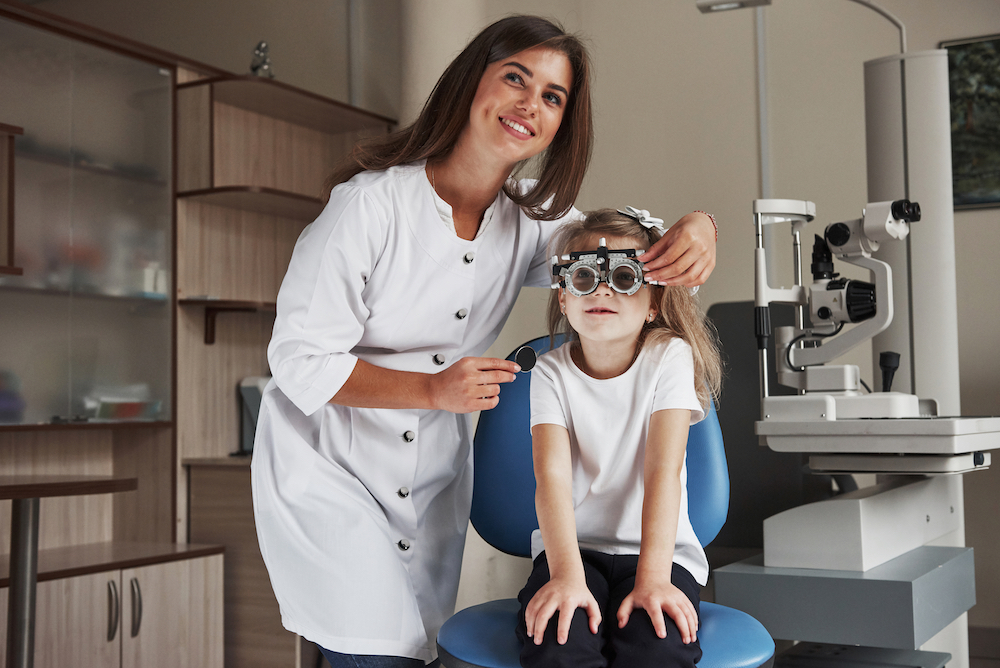
Myopia, also known as nearsightedness, is a refractive eye problem. This means that it’s caused by a problem with the way that light enters and is refracted by your eyes. It’s very common, more common than any other eye condition in fact. It’s also progressive, which means that it will get worse without treatment. While it can develop at any age, it most often starts to appear during childhood when the eyes undergo a period of rapid growth.
The good news is that myopia can be managed and treated. It’s important to keep it under control too. Here’s what you need to know about why myopia management and when you should get your child started on this important preventative treatment.
What is Myopia Control and Why is it Important?
Myopia control refers to the use of different tools and techniques to slow or even halt the progression of myopia, keeping it under control for as long as possible. The aim is to prevent your child from developing a high degree of myopia. There are several reasons for this. Firstly, children with high myopia are less likely to be able to wear standard glasses lenses or contact lenses and may not be good candidates for laser vision correction as they get older. Secondly, studies have found that people with high myopia are more likely to experience complications with their vision during their lifetime, including conditions like glaucoma and retinal detachment. Many of these conditions are sight-threatening and can have permanent consequences for your child’s vision should they develop them.
What are the Options for Myopia Management?
There are a variety of techniques that can be used to control and manage a child’s myopia. Some of the most popular and effective include the following:
Atropine Eyedrops
Some studies have shown that myopia progresses as a result of visual fatigue. This occurs when eyes become tired after long periods of focus – such as looking at a computer screen for hours. Atropine eyedrops work by causing the pupils to dilate, and this temporarily paralyzes the muscles inside the eye that are used for focusing, reducing the stress on them. Research also indicates that atropine binds to growth receptors found in the eye, preventing the stimulation that can cause the eye to grow too long.
MiSight Contact Lenses
Many children can handle wearing contact lenses from a young age. MiSight contact lenses have been shown to be an effective tool in slowing myopia progression. They have a special design that alters the way that light is focused by the eyes, reducing growth and relaxing the eyes. They also have the benefit of enabling your child to be able to see clearly without the need for glasses and are 1-day/single use, so can be disposed of each day and your child won’t have to worry about cleaning them.
Orthokeratology
Also known as ortho-k, this treatment also uses contact lenses to counteract myopia progression. However, these lenses are a little different. They are made from a rigid, gas-permeable material that enables them to both hold their shape and for oxygen to flow through them to reach the surface of the eyes. This enables them to be worn overnight – something that isn’t usually recommended. While your child sleeps, they gently reshape the cornea so that light is refracted correctly. The next morning, the lenses are removed and popped into a cleaning solution, but your child’s eyes will retain their new shape for a number of hours. This means that they can go about their day without wearing any prescription lenses. If they cease treatment, the corneas will quickly return to their original shape.
If you are concerned about myopia and have any questions, or to speak to us about myopia management treatment, please contact our friendly and experienced team at Giannotti Vision Care, Optometry in Scotts Valley, California at (831) 438-4482 today.









